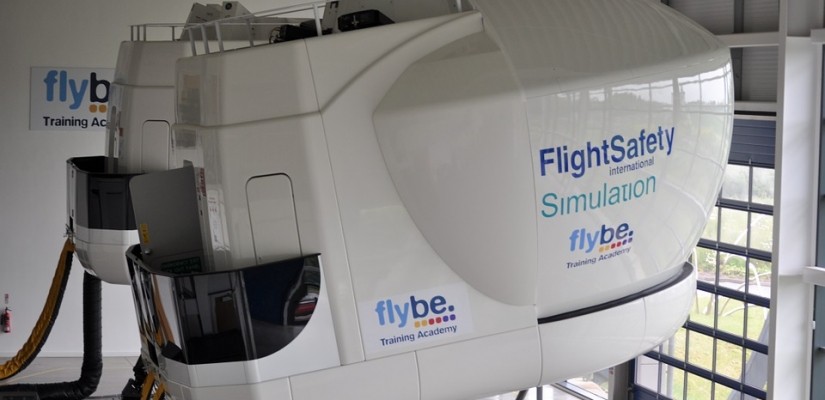Virtual Reality (VR) devices are largely known as gadgets of the gaming industry, even though their purpose is manifold. VR offers a range of benefits such as affordability, flexibility, easy use, and effectiveness. Flight simulators have been in operation for more than 80 years, but VR may be able to inherit their role as the central training device in the future. Access to flight training via VR is highly beneficial for a large number of aspiring pilots, since airlines struggle with an extreme shortage of flight crews and particularly pilots as demand for commercial flight continuously rises.
A flight simulator provides a comparably expensive mode of pilot training because the simulator consists of a decoupled front of an airplane attached to a movable platform. Installed video screens display the runway and simulate landscapes. Advanced models capture the motion, weather conditions, and communication of a real flight while saving fuel costs. While simulators allow pilots to experience the reality inside a cockpit, the cost of a flight simulator is high. The price of a full flight simulator ranges beyond the 10 million USD mark. In 2012, Air China bought three full flight simulators for the Airbus A320, A330 and Boeing 737 from Canadian aviation training company CAE Inc. for 42 million USD. Electricity for operation and the replacement of obsolete simulator models further increase the total cost of professional flight training.
In comparison, VR training requires little space and equipment, including a quality VR headset, a compatible computer, VR flight software, and additions like a joystick to mimic the inside of an airplane. VR technology visually and acoustically envelops users on the ground with the real environment of airplanes or helicopters. This facilitates the training of personnel in risky situations and under difficult weather conditions. Trainees navigate the virtual airplane through hand motions. Haptic VR further improves the realness of the virtual experience by sending sensations like vibrations to the trainee. VR experiences are said to be immersive and elicit the fear factor of flying a real airplane. VR technology can be used not only to test and train pilots but also the cabin crew, engineers, and mechanics. A wide variety of situations can be created to simulate tasks related to aviation.

A disadvantage of VR sets is that they cannot replace the physical surroundings of a flight simulator such as the control panel or oxygen masks. The advantage, however, is that VR sets are more flexible in their application, easy to use, and significantly more affordable than flight simulators, adding up to a cost of a few thousand USD. Increased use of VR could aid in training more pilots, mitigating the personnel shortage problem.
While the defense industry mainly uses VR to train pilots, the commercial aviation industry also profits from training cabin crew members. Lufthansa, Europe’s biggest airline by passenger count, began training flight attendants with VR at the airports in Frankfurt and Munich in April 2019. Lufthansa’s goal is to become a European market leader in cabin crew training with the commencement of the Lufthansa Aviation Training (LAT) project. Installing a total of 18 VR training cabins, Lufthansa plans to train 18,500 flight crew members annually.
A 2019 projection by Aviation company Boeing estimates that in the future, the industry will face a severe deficiency of personnel in the commercial aviation, the business aviation, and the civil helicopter sectors. In order to sustain current levels of global air traffic, companies will need an additional 804,000 civil pilots, 769,000 maintenance technicians, and 914,000 cabin crew members within the next 20 years until 2038. The International Air Transport Association predicts that the number of passengers worldwide will double and reach 8.2 billion by 2037. The air travel boom in Asia, in particular, poses a challenge to the industry. China is projected to surpass the United States as the largest air travel market in terms of traffic by the mid-2020s. Aviation markets in India, Indonesia, and Thailand are also expected to grow substantially and become world leaders by 2030. Aircrafts departing from and arriving in the Asia-Pacific region will transport approximately 4 billion passengers, accounting for almost half of the estimated global passenger count in 2037. As public flight traffic and the demand for personnel continue to grow, pilot wages also remain high as commercial airlines vie for their recruitment. VR flight training could aid in alleviating this situation, as more staff could be trained at a lower cost.
